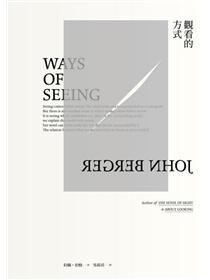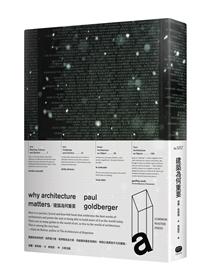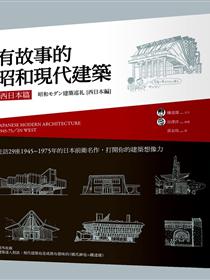章節試閱
主要建築師 克萊因.岱森建築事務所/愛思翠.克萊因&馬克.岱森
建築關鍵字 扭.minimum care是指別管太多?.互動
影像提供 Katsuhisa Kida(作品:葉片教堂);Ryota Atarashi(作品:Heidi住宅)
Key Architects Klein Dytham architecture / Astrid Klein & Mark Dytham
Architectural Keyword Twist.Does ’minimum care’ mean don’t deal with it too much?.Interactive
Photos Katsuhisa Kida (Project: Leaf Chapel); Ryota Atarashi (Project: Heidi House)
對我們而言,建築的關鍵字是「扭!」
所謂的扭,並不是什麼實質裝置,而是一種思考方法。放眼四望我們的生活環境,許多建築物充滿了因邏輯思考而生的筆直線條。筆直代表可預期性,線條不斷的向前跑,而且就只能依著之前運行的路線,繼續跑下去。
可預期性也許比較有安全感,但我們寧可選擇驚訝、運動與改變。我們希望能夠讓自己歷久卻彌新、讓工作是一種喜悅,而我們的策略與妙方就是:扭。扭可以顛覆期待性、創造歡樂,讓人們笑容滿面。扭可以使邏輯生出樂音來。願意跳支舞嗎?
The keyword for us in architecture is: ”Twist!”
The twist is not a formal device, but a way of thinking. Look around. There are a lot of straight lines in architecture, a lot of linear, logical thinking. The essence of all this linearity is that it is predictable. Lines run on. That’s what they do - they go on doing what they’ve done before.
Predictability maybe safe, but we prefer surprise, movement, change. The twist is the maneuver we use to make the old new, to turn a job into a joy. The twist subverts expectations, generates delight, and brings smiles to peoples faces. The twist makes music out of logic. Care for a dance dance?
阮慶岳:設計者是酒神的後裔嗎?
不管是東方的老子,或是西方的柏拉圖,思想底層裡似乎都暗示宇宙的平衡穩定與永久持恆性;甚至因之衍生出後續某些觀點,認為天地的和諧,就是被人類的創作物所破壞的。
因此,作為一個創作者,某個程度上就必須選擇自己的位置點,是要扮演能引路回復完美太初的順應者,或是通往未知新桃花源地的挑戰者?也就是說,要讓自己成為可被預期的直線順應者(當然或可經由這條原路而回返到太初的樂園),還是選擇成為通往不可知終點折扭線的挑戰者?宇宙以一種冥冥不可知的規範運作著,創作者不可免要思索如何與之應對。
希臘文明將太陽神阿波羅與酒神戴奧尼索斯並列共舉,顯示對宇宙理性秩序與人類感性慾望的雙重承認與接受態度,羅馬帝國之後的西方文明,逐漸有以太陽神單一為尚,貶抑酒神存在的傾向。但人類內在酒神後裔的那部分原質,並未因此消失,而且屢屢成為召喚藝術的泉源處所,因此代表理性與感性的阿波羅與戴奧尼索斯二者間的關係,並未在這樣的歷史轉化間真正得到確認,反而不斷在西方藝術史上顛簸起伏,顯現這矛盾的仍待挑戰與質詢。
宇宙的確存有浩瀚如天籟之音的韻律與節奏,然而人類個體的內在,也充滿各種未爆火山般的能量洶湧波盪,二者同時召喚創作的靈魂,難分也難捨;也因此,設計者必須能在之間自在往返,有如農夫巡視田畝、獵者穿梭山林般熟悉自由。扭,或就是一種穿梭的路徑,因為單道的直線必無法通往兩個互不相屬的國度,若不想錯失其中任一方,創作者必須要能尋思出一條自我路徑,讓自己不至於被框綁在理性或感性的單一面向裡。
但丁在《神曲》裡,就是把那些可以同時身在兩地的靈魂稱作天使。野兔與小鹿在原野裡被追捕的時候,本能會選擇一條往返曲折的路徑,而非速度可以跑最快的直線脫逃;然而這看似曲折無理也無目的的路徑,最後卻可畫出一條簡單的筆直線條或圓形,並引導他們返回原處巢穴。這事實似乎也說明了曲折與直線,或有其底層的某種互通關連,而非表面看起來那樣的決然斷分。
是的,扭一下的確可以增添生命許多歡樂。而且,可能不但絲毫不干擾冥冥宇宙的直線大道,反而是設計者一條到達同樣終點的私密幽徑呢!
Ching-Yue Roan: Are designers descended from Dionysus?
Whether discussing Lao Zhi from the East or Plato from the West, the ultimate layer of human reasoning seems to always hint at the balance and permanence of the universe. Some viewpoints extrapolated from this involve the belief that the harmony in heaven and earth is destroyed by the creations of humanity.
Therefore, as a designer, one must determine his own position to some degree--does one wish to play the role of someone who accommodates in order to restore the Original? Or as a challenger who searches for a new Paradise? In other words, does one want to let himself become a predictable straight line (which can lead us back to Eden), or does one choose to become a challenger, moving towards the ultimate unknown twist? The universe creates through profound, unknown principles; designers can’t help but to think how to respond to these principles.
Greek culture regards Dionysus, the god of wine, as important as the sun god Apollo, signifying an attitude of recognition and acceptance of both rational order and human emotion and desires within the universe. Western civilization after the Roman Empire gradually moved towards a single sun god, and began placing less value on the god of wine. However, the inherent traits of the god of wine found within humanity’s descendants did not disappear as a result. Rather, they became the inspiration of art time and again. As a result, the relationship between Apollo and Dionysus, representing the rational and emotional, was never truly affirmed within the twists and turns of history; instead, the history of Western art continuously shows that this contradiction is waiting to be challenged and explored.
The universe absolutely possesses colossal rhythms and cadences, yet at the same time, a vast array of surging power, like volcanoes waiting to be exploded, is found within humans themselves. These two inseparable phenomena call forth the creative spirit within us. As a result, designer must be able to roam freely between these two spheres, like a farmer inspecting familiar fields or a hunter freely roaming through forests. Twisting is a path through these fields and forests, as single straight lines cannot connect these two aspects. If a designer does not want to miss out on one aspect, he must be able to consider a path that is his own, so that he is not restricted to only the rational or only the emotional.
In his Divine Comedy, Dante regards those souls that can exist in two places at once ’angels.’ When hare and deer are being hunted down in open country, their instinct is to choose a path that twists and winds, rather than a straight line, which would allow them to run faster. However, in the end, a straight line or circle could be drawn over the paths they take, which are seemingly without any logic or destination, and one would see that they take the animals back to their original dens. This fact seems to also prove that twists adding to curves and straight lines can certainly increase joy in life. In addition, not only does this not interfere with the straight lines found in the universe, but it is perhaps a private path that arrives at the same designed ultimate destination.
推薦建築師 建築工作室/北山
主要建築師 克萊因.岱森建築事務所/愛思翠.克萊因&馬克.岱森 建築關鍵字 扭.minimum care是指別管太多?.互動影像提供 Katsuhisa Kida(作品:葉片教堂);Ryota Atarashi(作品:Heidi住宅)Key Architects Klein Dytham architecture / Astrid Klein & Mark DythamArchitectural Keyword Twist.Does ’minimum care’ mean don’t deal with it too much?.InteractivePhotos Katsuhisa Kida (Project: Leaf Chapel); Ryota Atarashi (Project: Heidi House)對我們而言,建築的關鍵字是「扭!」所謂的扭,並不是什麼實質裝置,而...



 8收藏
8收藏

 7二手徵求有驚喜
7二手徵求有驚喜







































